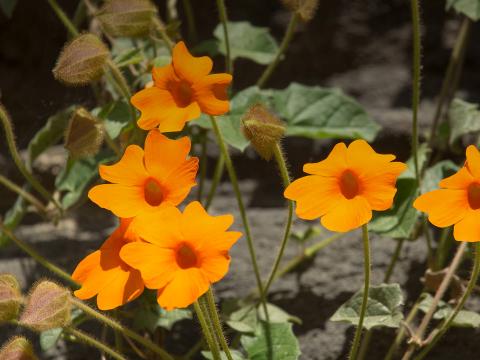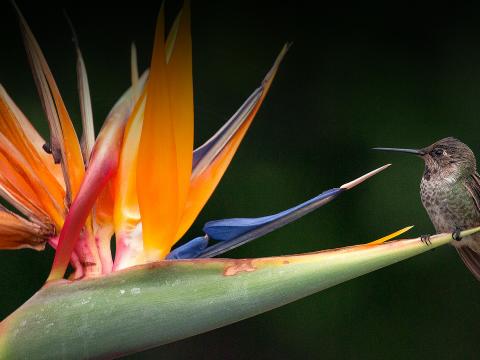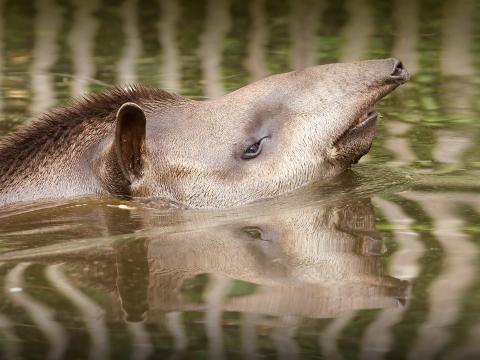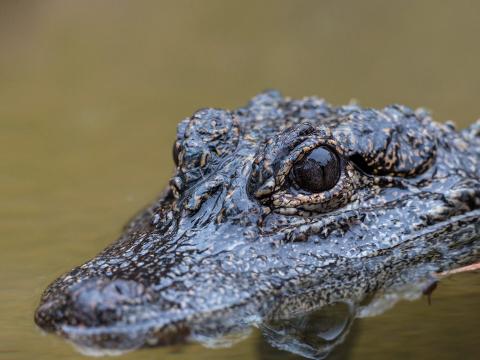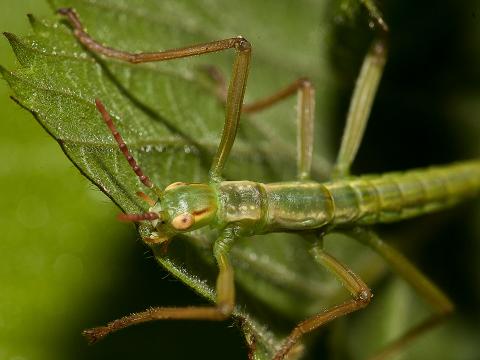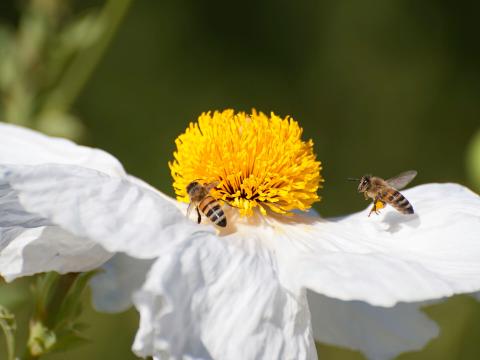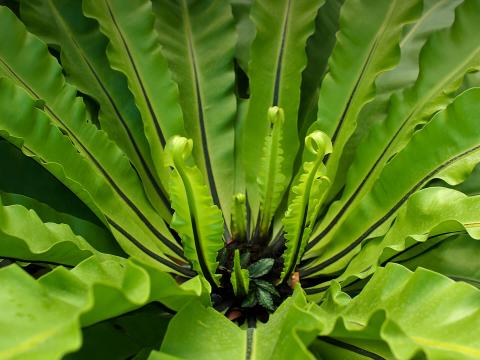Hibiscus
- DIVISION: Magnoliophyta
- CLASS: Magnoliopsida
- ORDER: Malvales
- FAMILY: Malvaceae
- GENUS: Hibiscus
- SPECIES: about 200
OVERVIEW
The big, bold presence of hibiscus flowers is eye-catching, whether they are on the lushly leaved plant or tucked behind an ear. Yet beyond the kaleidoscope of colors is a group of plants with a fascinating history and unique uses.
Hibiscus are mallows, related to, yes, the marshmallow plant. In another relative, the hollyhock, you can see the family resemblance in the shape of the flowers. Other family members are surprising: okra and cotton!
CHARACTERISTICS
Native to warm-temperate, subtropical and tropical regions, the genus Hibiscus includes both woody shrubs and small trees as well as herbaceous plants. The large, trumpet-shaped flowers have five or more petals, and come in a range of colors, including white, pink, orange, red, yellow, purple, and multi-hued patterns.
Hibiscus blossoms open wide, inviting pollinators from bees to hummingbirds to reach in for a deep drink of nectar. As they do, they inevitably make contact with the flower's prominent stamen and pistil, aiding in the plant's pollination.
The fruit set after pollination is a dry, five-lobed capsule—each section contains several seeds. When the seeds are mature, the capsule split open, releasing the seeds.
CULTIVATION
Most of the hibiscus flowers included in landscapes are hybrids produced from eight "ancestor" varieties. These were originally native to Mauritius, Madagascar, Fiji, Hawaii, and India or China. They still exist today and are recognizable as hibiscus, but their blossoms are smaller than the hybrids they gave rise to.
Hibiscus plants vary in their growth habit, depending on species. Some remain large shrubs, while others grow as trees of around 30 feet (9 meters) in height. A most unusual-looking variety, Hibiscus schizopetalus, from Madagascar has become highly desired by plant collectors. Shizopetalus means split petals and describes this variety's unique and delicate look.
USES
Besides their obvious ornamental value, hibiscus blossoms have deep meaning in human culture. Blooms of different species reign as the state flower of Hawaii, and the national flower of Haiti, South Korea, and Malaysia.
One type, H. sabdariffa, also known as roselle, is prized for its culinary and medicinal uses. The flowers are often sold as a gourmet item that can be stuffed with soft cheese, as some people do with squash blossoms. And the bright red calyces around the base of the flower are transformed into drinks that are high in vitamin C and antioxidants. In addition, when decaying flowers are crushed, they release a black liquid that has been used for decades as shoe black.



